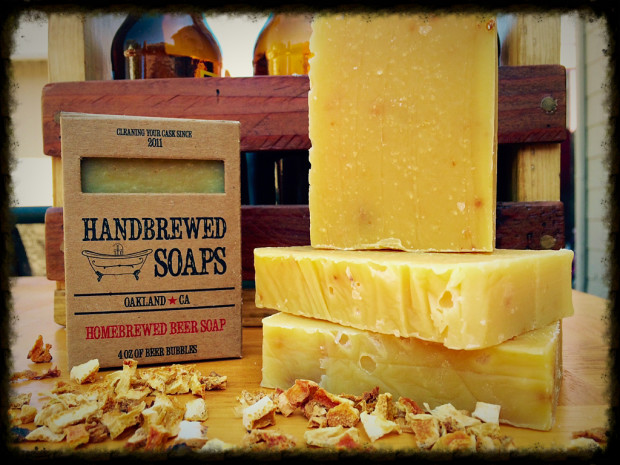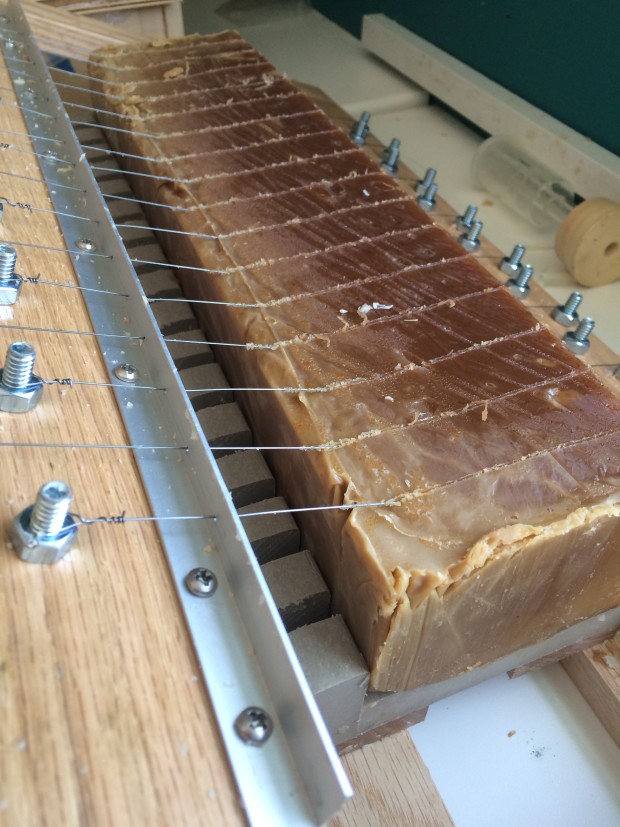 It’s nearly summer, so we at Noble Brewer would like to take the opportunity to offer you a special summer activity that involves making beer and beer-infused soap!
It’s nearly summer, so we at Noble Brewer would like to take the opportunity to offer you a special summer activity that involves making beer and beer-infused soap!
INTRODUCTION TO MAKING BEER AND SOAP
At Handbrewed Soaps, we believe that brewing beer and soap are both a science and an art. Just like a science experiment, you must follow some basic rules in order to produce the desired outcome or product—in our case, beer and soap. And, as with art, individual interpretation, experimentation, and improvisation are encouraged and expected. While many brewers feel that they have found the “best way” to brew beer, there are so many variables in the brewing process, that there’s a good chance that a homebrewer in your own neighborhood is doing something radically different or just subtly unique enough that you could apply to your own brewing process to make more interesting or flavorful beers… and soaps! At Handbrewed Soaps, we have developed our own unique style of brewing and soap-making by reading, researching, and hanging out with fellow homebrewers and soapmakers. We hope that you enjoy the methods, tips, and tricks that we use in our brewing and soapmaking process!
If you are new to brewing beer or soap, and want to learn more about the basics of either (or both!), we highly recommend How to Brew by John Palmer and The Soapmaker’s Companion by Susan Miller Cavitch. Of course there are hundreds, if not thousands, of resources online to help you get started and support you every step along the way. Below is an overview of how Brew Master Eric Swihart brews the beer, and how Soap Lady Alyson Swihart transforms the beer into soap. Don’t worry, we don’t use all of the beer to make soap — we drink a lot of it too!!!
ENJOY A TASTY COLD BEVERAGE AND MAKE SOME SOAP!
At this point we take the beer for our cold processed soap, as we do not want it carbonated. Cold process soap is the act of mixing a few oils (olive oil, coconut oil, and sustainable palm oil in our case) to an alkali (Sodium Hydroxide: aka Lye). When oils and sodium hydroxide are mixed together, it goes through a chemical process called saponification ultimately creating what we know as a bar of soap. Due to this chemical process, it is important for the soap maker to take safety precautions (wearing gloves, eye protection, and being in a well ventilated area). Through the chemical process, no lye remains and great bar of soap is made!

Step One: Prepare your Lye solution, which includes a liquid and sodium hydroxide. For our liquid, we use our homebrewed beer (again making sure the carbonation is completely out of it or it will volcano.) The ratio of liquid to Sodium Hydroxide depends on your recipe. Always remember to pour the Lye into the liquid, not the other way around! This solution will reach almost boiling point so make sure to be careful with it! Wait for it to cool to under 130 degrees, I prefer 110 degrees.
Step Two: Select your oils and melt them! Once they are is a 10-degree range of your lye (that is under 130 degrees,) start mixing your oils with a hand mixer and add your lye!
Step Three: Mix, Mix, Mix! Once you’ve noticed the soap thickening add any essential oils and exfoliants (in our case Orange Essential Oil and Ground Orange). You are going to keep mixing until everything has ‘traced.’ Trace is when your soap has emulsified and looks like pudding. You can check for trace by pulling your hand mixer out of your soap and if it leaves “trails” on top, it’s traced!

Step Four: Pour the soap into your molds, and then cover with a towel to keep it warm. Your soap will continue to saponify. Leave in the molds for 24- 48 hour, after which you can cut. But you will have to wait another 4-6 weeks before using, as the soap needs to cure. During the curing process, excess moisture evaporates from the bars, leaving a harder, longer-lasting soap!
And this is how we make our Orange Honey Wheat Beer Soap from Grain to Soap!
More Soap Making
from makeZine